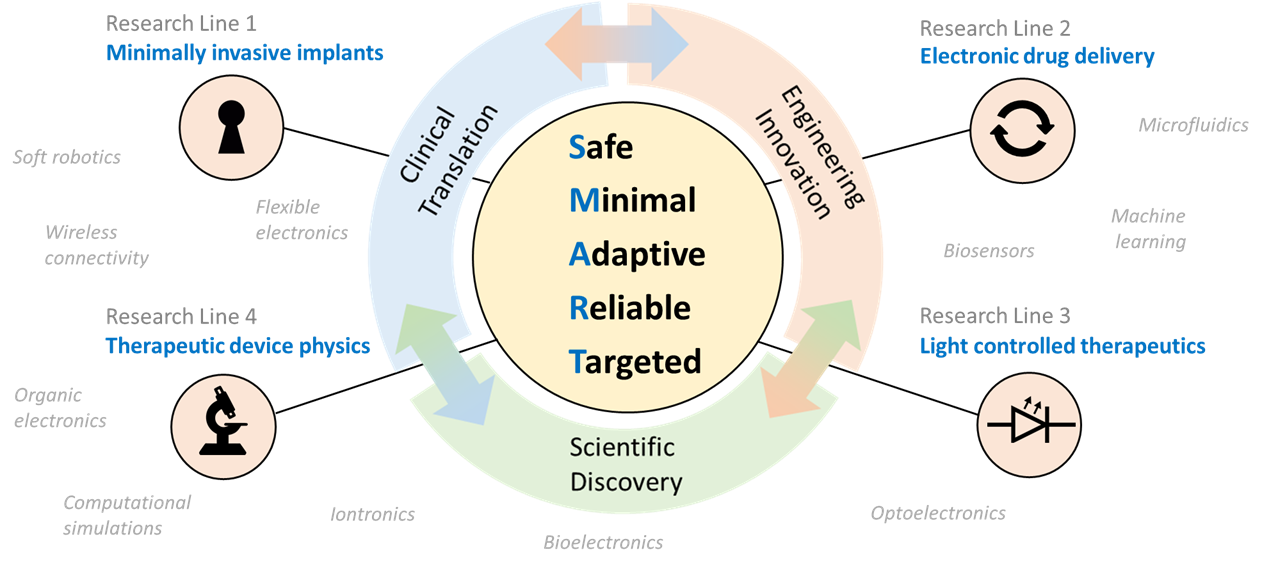
Our research is focused on developing bionic systems to improve healthcare and advance bioscience. These technologies often take design inspiration from the same biological systems with which they interact while leveraging advances in parallel fields such as biosensors, optoelectronics, soft robotics, machine learning and neuroengineering.
We are commited to having a lasting impact and as such we work along the spectrum of scientific discovery, engineering innovation and clinical translation. On going project themes include:
Electronic drug delivery: Targeted drug delivery can focus treatment on the region of the body affected by a given pathology thereby enhancing the effectiveness of the treatment while reducing side effects inherent in systemic treatments. Towards that end, we are leveraging the ion conductivity of polymers to develop implantable devices that can deliver drugs precisely when and where they are needed. We showed this to be a promising method for managing epileptic seizures. We are currently adapting this technology as a research tool to understand the brain as well as for treating pathologies such as chronic pain and Parkinson’s disease.
Minimally invasive implants: Existing clinical neurostimulation implants often require invasive surgical procedures that limit the eligible patient pool. We are developing novel device architectures and control systems that can allow for key-hole like surgery of large implants.
Light-controlled therapeutics: Incorporating optoelectronic and photonic components into therapeutic systems could meet the clinical demand for systems to be selective and minimally invasive as well as energy efficient. We are exploring new avenues in light-controlled therapeutics to reach therapeutic targets not currently accessible with existing systems.
Fundamentals underpinning therapeutic devices: Though much work has been done to demonstrate the potential of emerging therapeutic devices little effort has been placed on understanding the physics behind them. Principal investigations into the underlying working mechanisms and critical electronic/ionic/biotic interfaces within these devices will lead to critical performance improvements and may open the door to additional functionalities.
